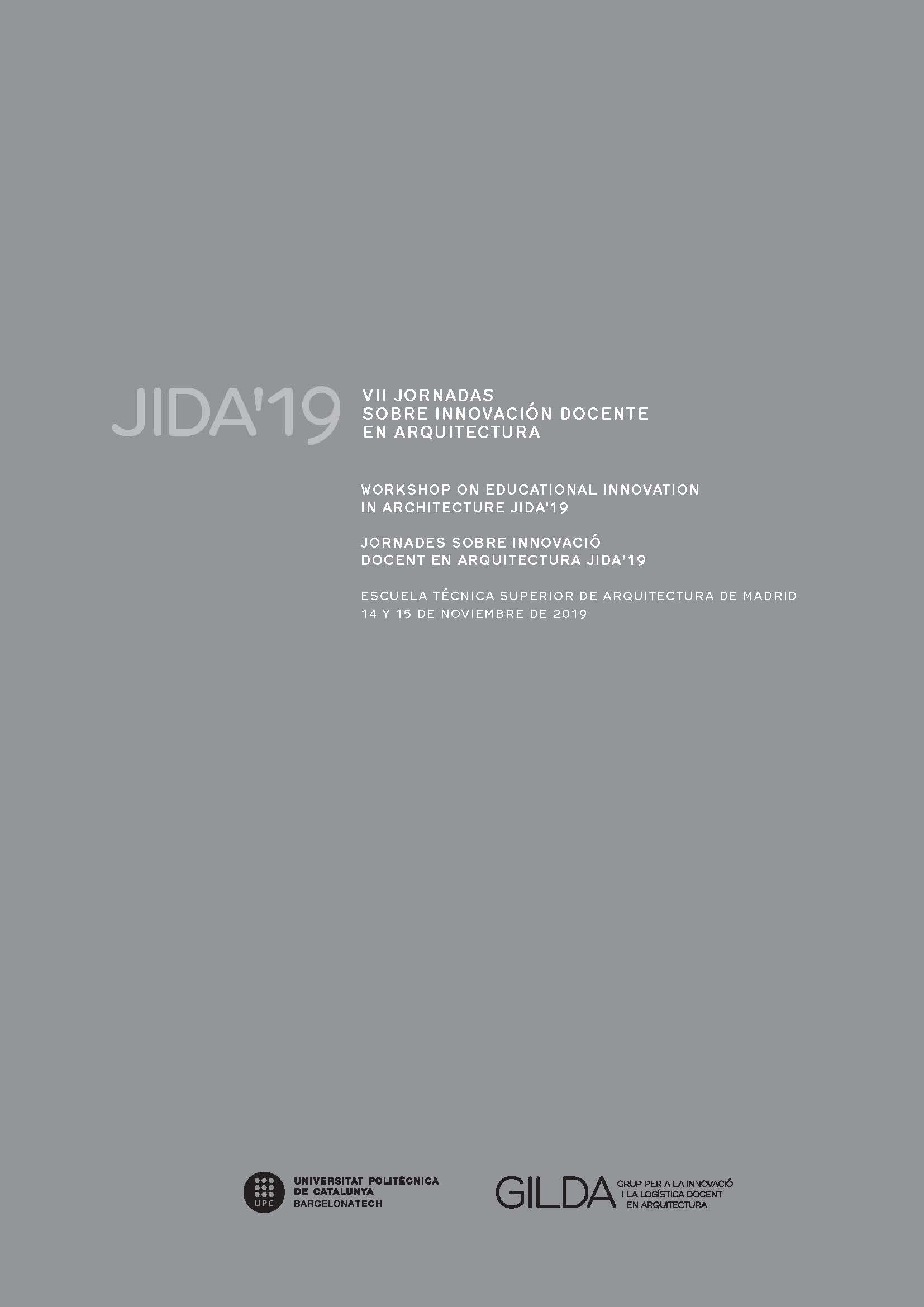Design Through Play: The Archispiel Experience
DOI:
https://doi.org/10.5821/jida.2019.8349Abstract
This paper focuses on the implications and potentialities of playful practices and game formats as innovative teaching methods in architecture, urban planning and, more generally, design. It provides a very brief account of serious games pioneers and the current state of the art of what the authors call ‘design through play’. It then presents one game-based format, Archispiel, designed by the authors in 2015, along with a case study of its use in a classroom context, Magaluf Reset. The exercise, drawing on traditional war games and diplomacy games designed from the 1950s onwards, combines strategic negotiation with the use of chance to produce unexpected effects. Consequently, rather than solutions answering to a predefined brief, the results are quite literally the outcome of an exploratory and open-ended design logic. The experience shows how design through play offers a rich array of explorative possibilities not afforded by conventional design practices.
References
ABT, Clark. (1970). Serious Games. New York: Viking Press.
ALLEN, Stan. (2000). “Mapping the Unmappable: On Notationâ€. Practice: Architecture, Technique and Representation. London: Routledge, 31-45.
BOGOST, Ian. (2016). Play Anything: The Pleasure of Limits, the Uses of Boredom, and the Secret of Games. New York: Basic Books.
CALLOIS, Roger. (2001). Man, Play, and Games. Chicago: University of Illinois Press. (Les Jeux et les Hommes, 1958).
BUNSCHOTEN, Raoul. (2001). Urban Flotsam. Rotterdam: 010 Publishers.
DJAOUTI, Damien, ÃLVAREZ, Julian and JESSEL, Jean-Pierre. (2011). “Classifying Serious Games: The G/P/S Modelâ€. Patrick Felicia, ed., Handbook of Research on Improving Learning and Motivation through Educational Games: Multidisciplinary Approaches. Hershey, PA: IGI Global.
EASTERLING, Keller. (2005). Enduring Innocence: Global Architecture and Its Political Masquerades. Cambridge, MA: The MIT Press.
ELVIRA, Juan. (2005). “Control Remot / Remote Controlâ€. Quaderns d’arquitectura i urbanisme, 247: 84-95.
HUIZINGA, Johan. (1948). Homo Ludens: A Study of the Play-Element in Culture. London: Routledge & Kegan Paul. (Homo Ludens: Proeve eener bepaling van het spel-element der cultuur, 1938)
JACKSON, John Brinckerhoff. (1984). “Landscape as Seen by the Militaryâ€, Discovering the Vernacular Landscape. New Haven, CT: Yale University Press, 131-137.
KRAUSSE, Joachim and Claude Lichtenstein. (1999). Your Private Sky: R. Buckminster Fuller, The Art of Design Science. Baden: Lars Müller Publishers.
LUCAN, Jacques. Oma. (1991). Rem Koolhaas: Architetture 1970-1990. Milano: Electa.
MIGAYROU, Frédéric, ed. (2014). Bernard Tschumi. Architecture: concept & notation. Paris: Éditions du Centre Pompidou.
ORTEGA, LluÃs. (2017). The Total Designer: Authorship in Architecture in the Postdigital Age. New York: Actar.
PAEZ, Roger. (2019). Operative Mapping: Maps as Design Tools. New York: Actar.
PETERSON, Jon. (2012). Playing at the World: A History of Simulating Wars, People and Fantastic Adventures, from Chess to Role-playing Games. San Diego, CA: Unreason Press.
PIAGET, Jean. (1962). Play, Dreams and Imitation in Childhood. New York: Norton. (La formation du symbole chez l'enfant, 1946).
PRICE, Cedric. (2003. 1984). The Square Book. Chichester; Wiley-Academy.
REISSWITZ, Georg Heinrich Rudolf Johann von. (1824). Anleitung zur Darstellung militairische Manover mit dem Apparat des Kriegsspiel. Berlin.
SOLÀ-MORALES, Manuel de. (1970). La ciudad y los juegos. Monografias ETSAB-LUB, num 06. Barcelona: Escola Tècnica Superior d’Arquitectura de Barcelona, Laboratori d’Urbanisme.
VYGOTSKY, Lev S. (2016). “Play and Its Role in the Mental Development of the Childâ€, International Research in Early Childhood Education Vol. 7, No. 2 (Igra i ee rol v umstvennom razvitii rebenka, 1966).



















